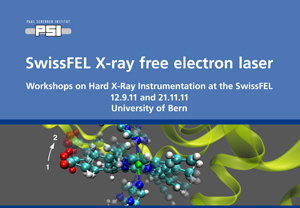Speaker
Davide Bleiner
(Universität Bern)
Description
Newly available light sources are pushing the limit of insights thanks to short wavelength light sources. Most of these large-scale sources, such as the X-ray Free-Electron Laser as well as the Synchrotron, are operated as user-facilities, i.e. the researchers can access them on a beam-time basis, in shifts of a few hours each. Therefore, despite the superior performance of such instrumentation, and uniqueness for proof-of-principle investigations, their footprint, cost, and bottlenecked access represent major impedances to scientific throughput. Furthermore, the interface with the industry is hampered, which slows-down the rapid porting of cutting-edge fundamental findings into products for the society.
The Bern Advanced Glass Laser for Experiments (“BeAGLE”) is our table-top system for the generation of coherent light in the extreme ultraviolet (XUV). Its uniqueness resides in the unmatched narrow linewidths (<0.01%), discrete tunability across the XUV, redundant brightness of >1025 ph. s-1 mm-2 mr-2 0.1% BW-1, and compactness. The performance of the XUV laser is complementary to that of high-harmonic generation (HHG), which with its broadband emission is superior for the generation of sub-fs pulses, thus in fact enabling atto-science. On the other hand, the mentioned specifications make the XUV laser ideal for a number of ultrafast imaging and spectroscopy applications. These are nowadays widely popular at large-scale facilities, and it is a preliminary research task of my group that of enabling comparable nano-science capabilities in the lab.
Author
Davide Bleiner
(Universität Bern)

